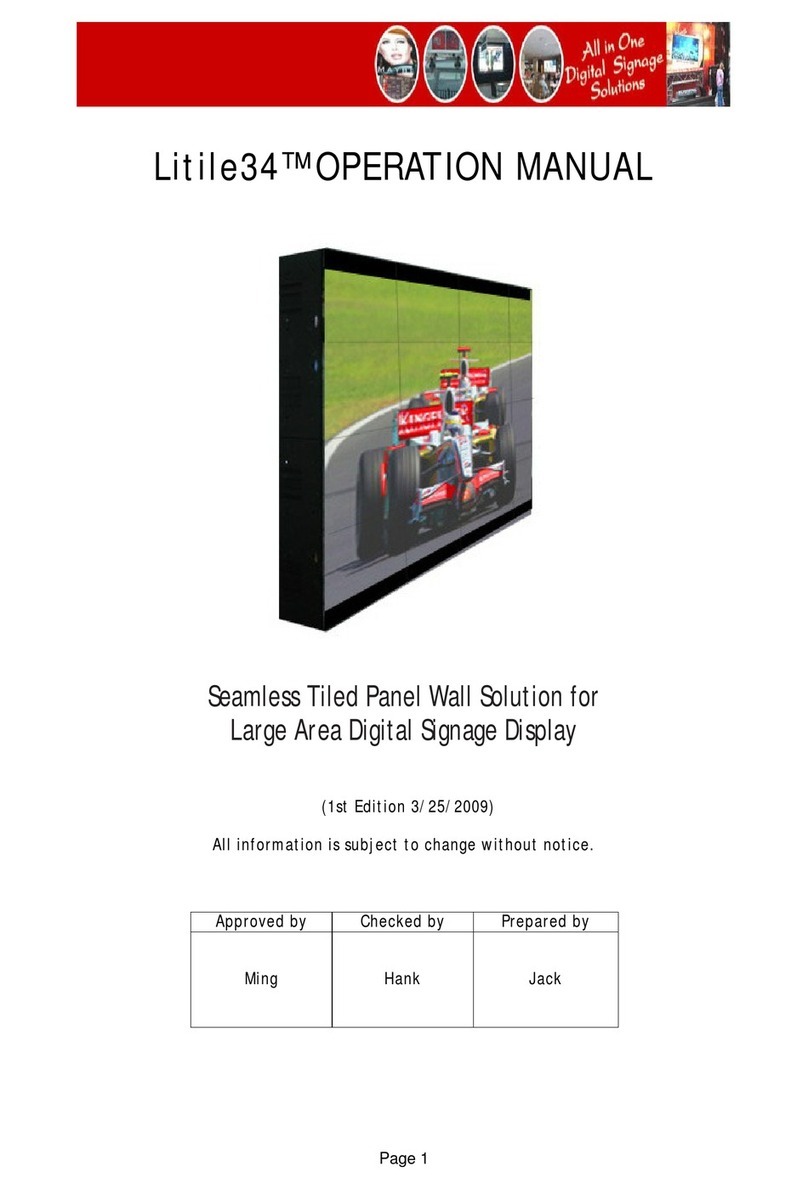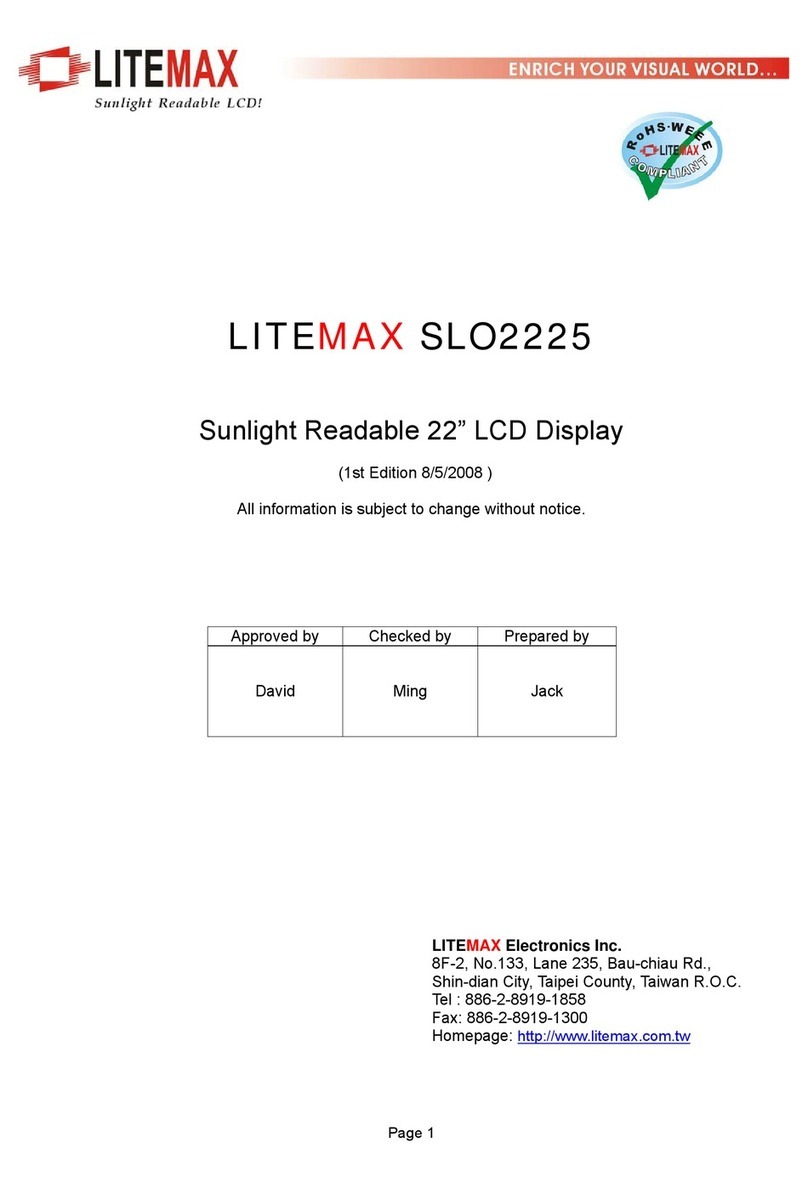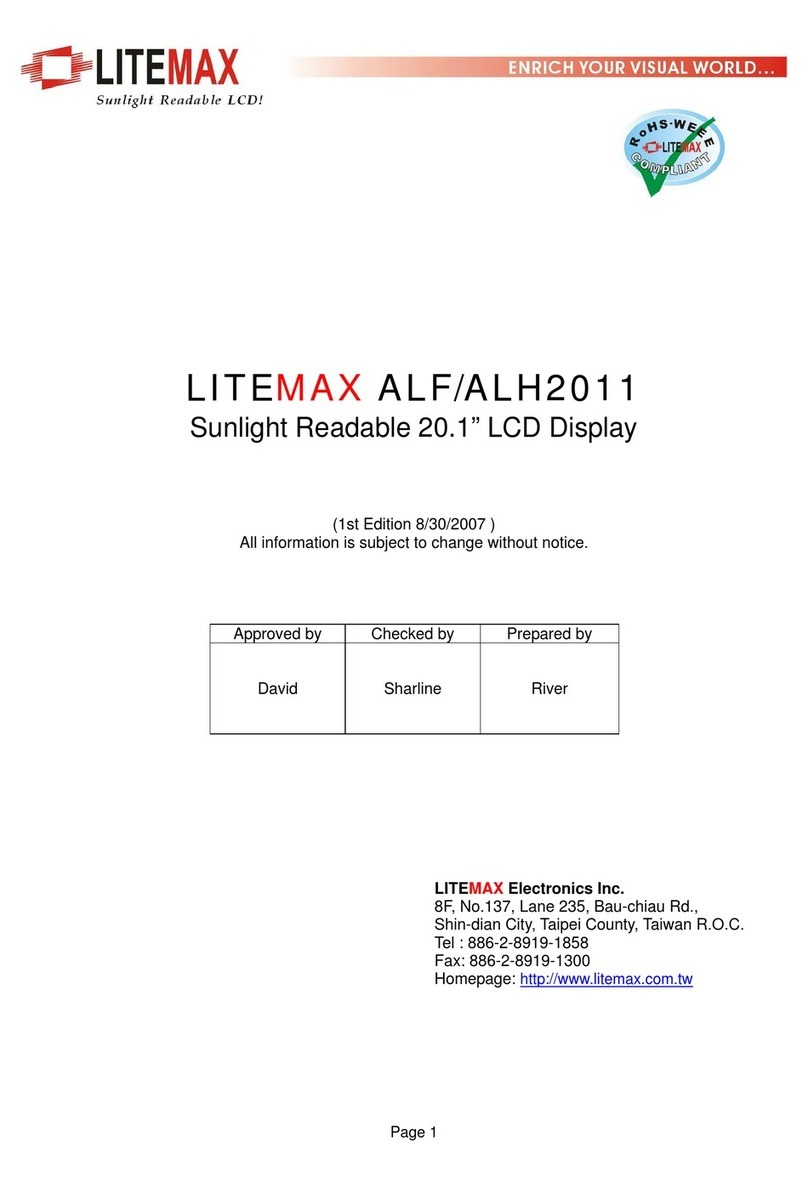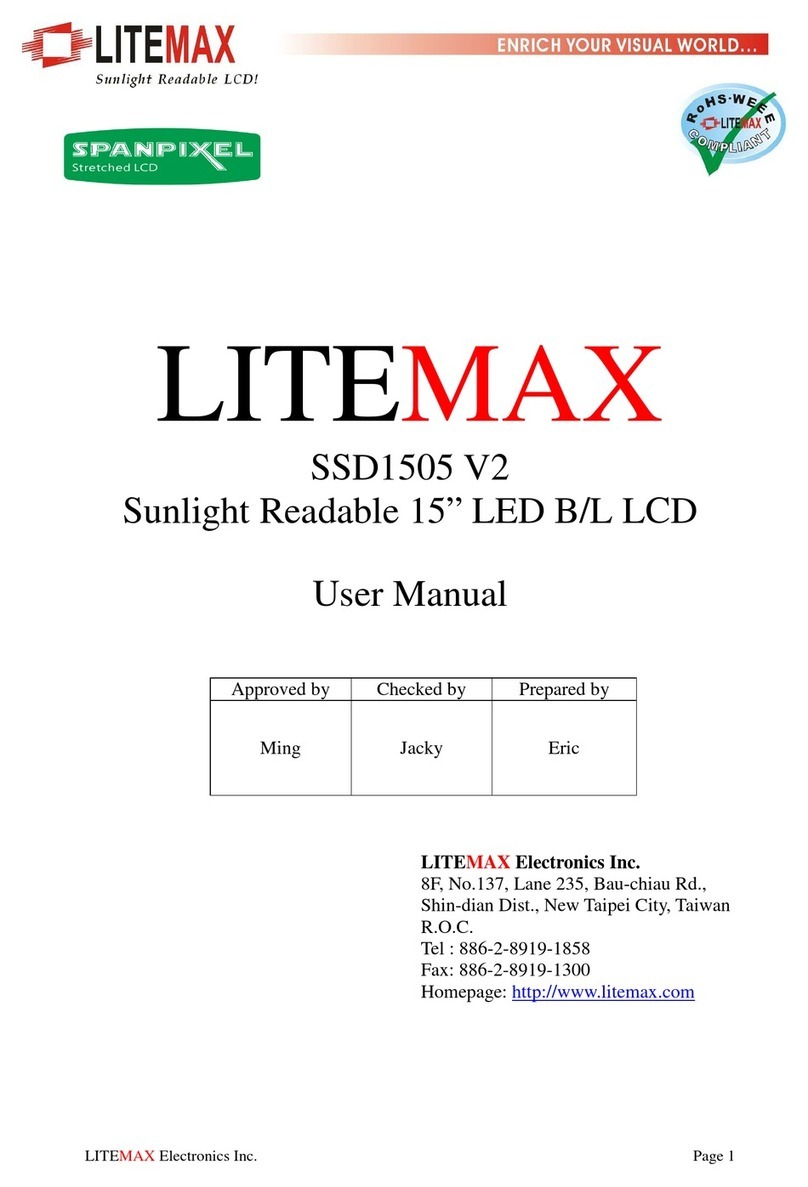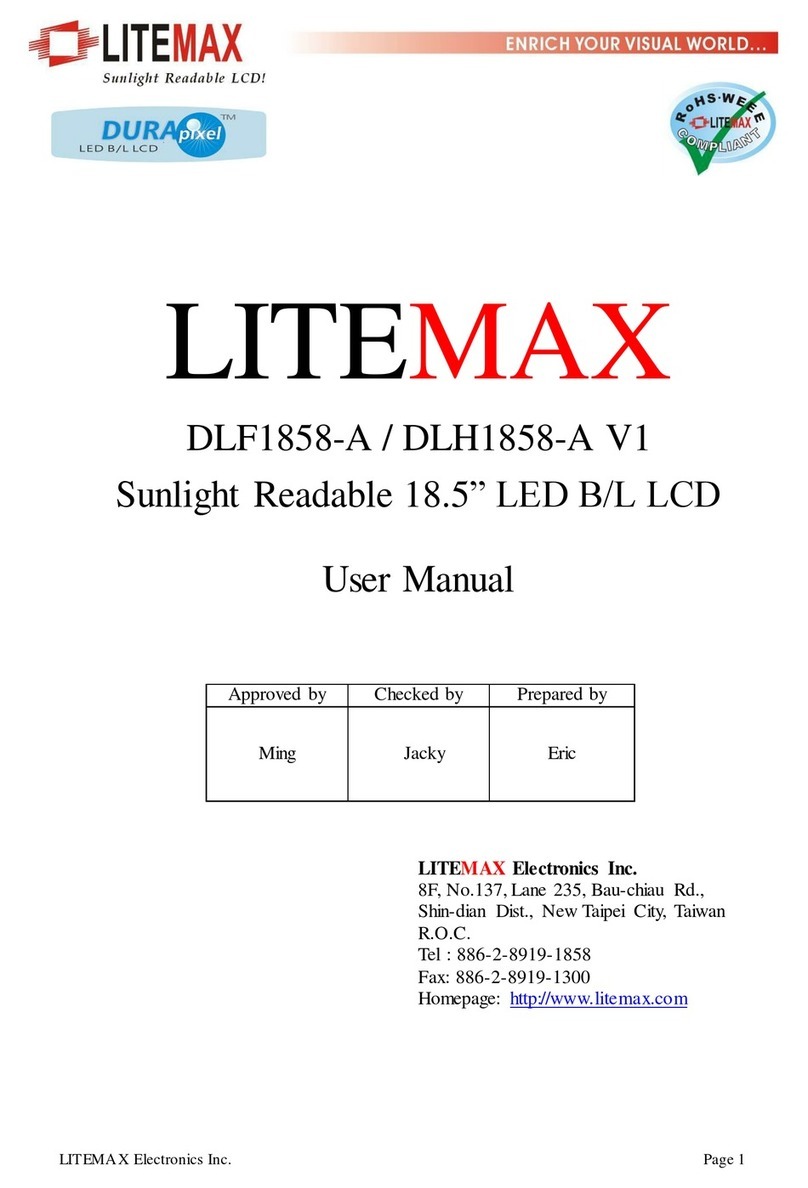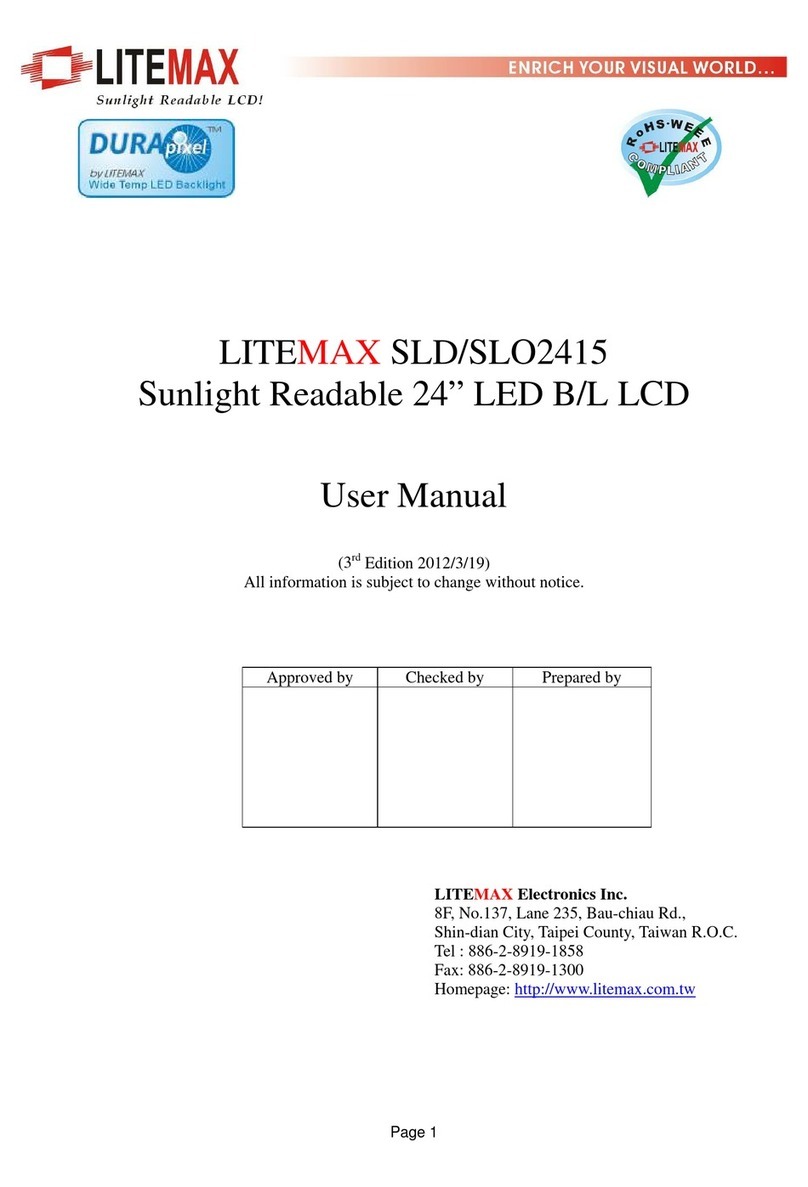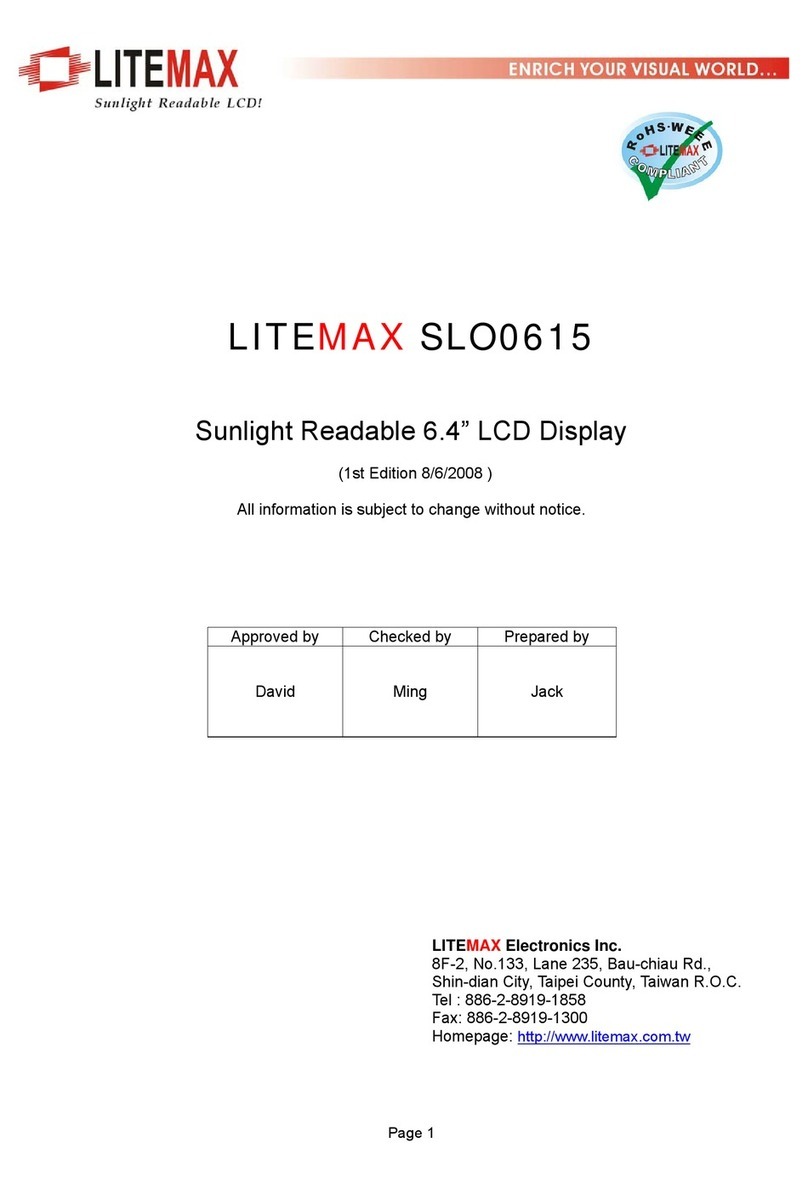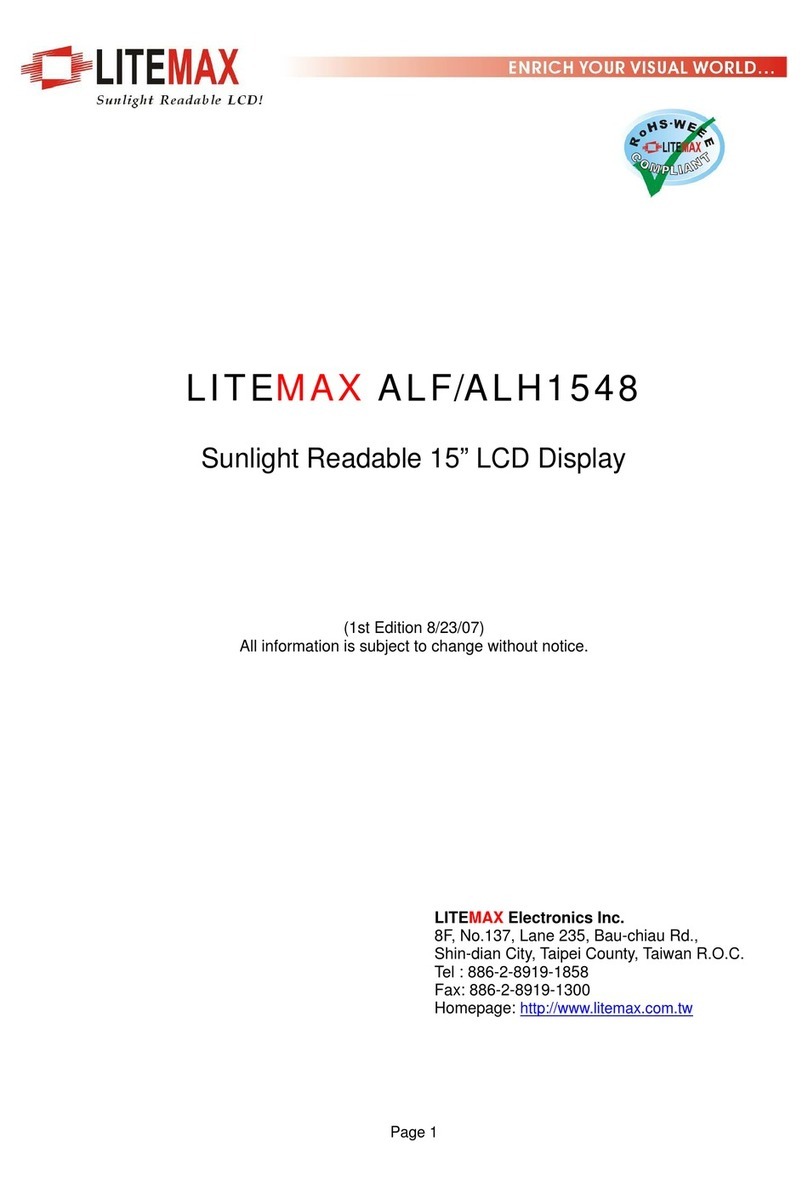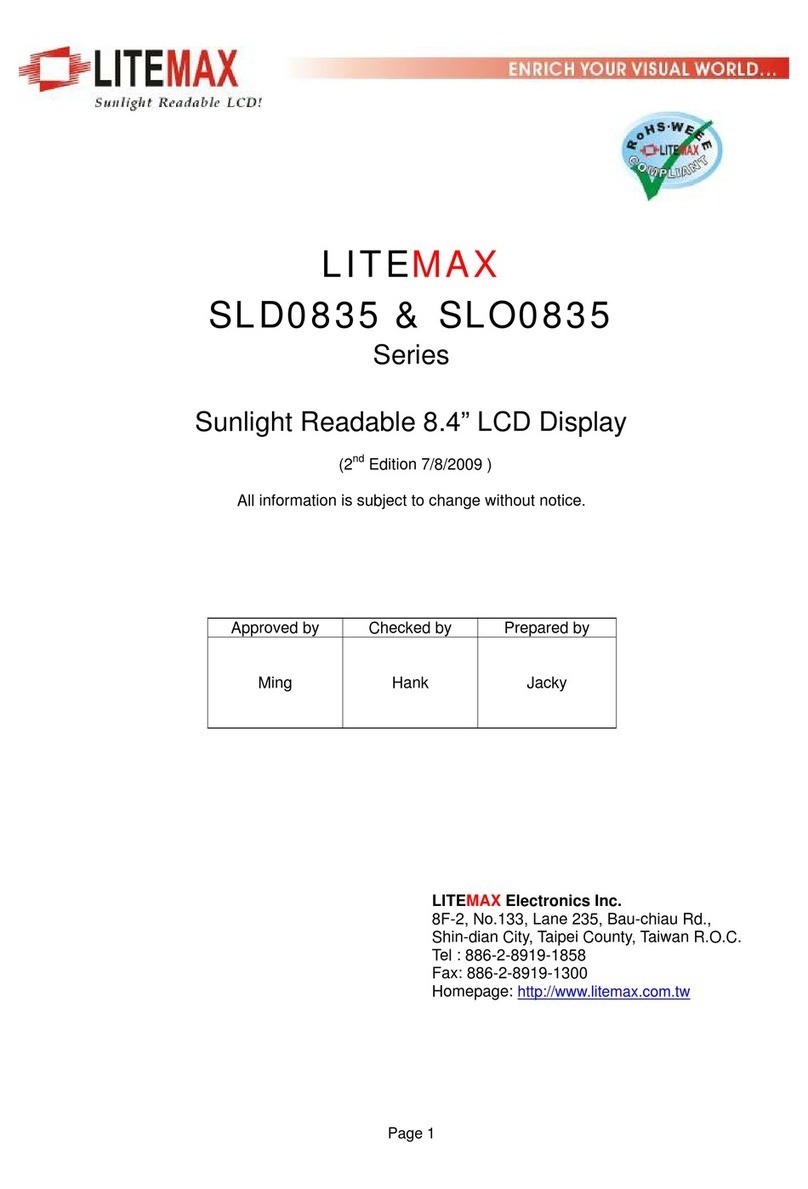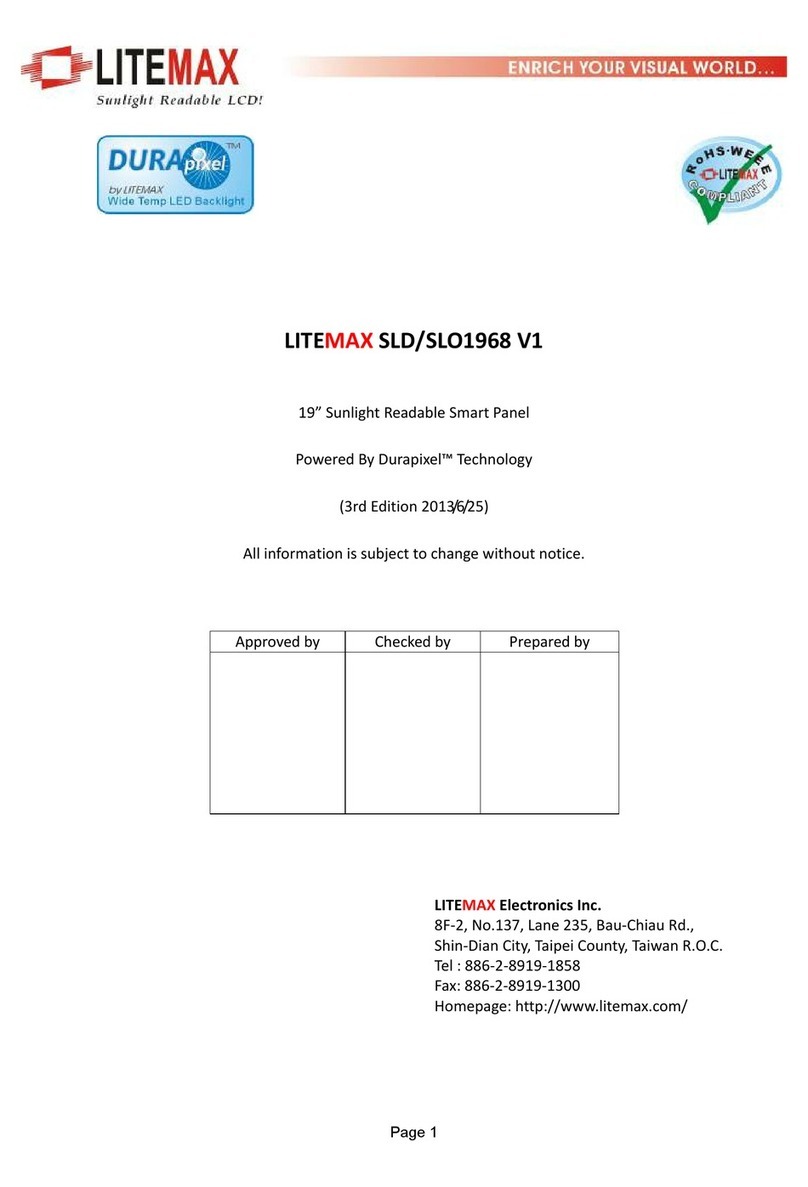
Global LCD Panel Exchange Center www.panelook.com
One step solution for LCD / PDP / OLED panel application: Datasheet, inventory and accessory! www.panelook.com
CONTENTS
RECORD OF REVISION .................................................................................................. 2
1.0 GENERAL DESCRIPTION.......................................................................................... 4
1.1 OVERVIEW.......................................................................................................... 4
1.2 FEATURES .......................................................................................................... 4
1.3 APPLICATION...................................................................................................... 4
1.4 GENERAL SPECIFICATI0NS .............................................................................. 4
2.0 ELECTRICAL CHARACTERISTICS ........................................................................... 5
2.1 ELECTRICAL CHARACTERISTICS .................................................................... 5
2.2 LCD PANEL SIGNAL PROCESSING BOARD..................................................... 6
2.3 BACKLIGHT CONNECTOR PIN CONFIGURATION ........................................... 7
2.4 SIGNAL TIMING SPECIFICATIONS .................................................................... 7
2.5 SIGNAL TIMING WAVEFORMS .......................................................................... 8
3.0 OPTICAL CHARACTERISTICS .................................................................................. 9
3.1 TEST CONDITIONS ............................................................................................ 9
3.2 OPTICAL SPECIFICATIONS ............................................................................... 9
4.0 MECHANICAL CHARACTERISTICS ........................................................................ 12
SSD1505 MECHANICAL SPECIFICATION ............................................................. 12
5.0 PRECAUTIONS ........................................................................................................ 13
5.1 HANDLING PRECAUTIONS.............................................................................. 13
5.2 STORAGE PRECAUTIONS............................................................................... 13
5.3 OPERATION PRECAUTIONS ........................................................................... 13
6.0 AD Board & OSD Functions ...................................................................................... 14
6.1 AD BOARD GENERAL SPECIFICATIONS ........................................................ 14
6.2 SUPPORTED TIMING (*by your panel resolution)............................................. 14
6.3 MEMBRANE CONTROL BUTTOM.................................................................... 15
6.4 OSD FUNCTIONS ............................................................................................. 15
Page 3
